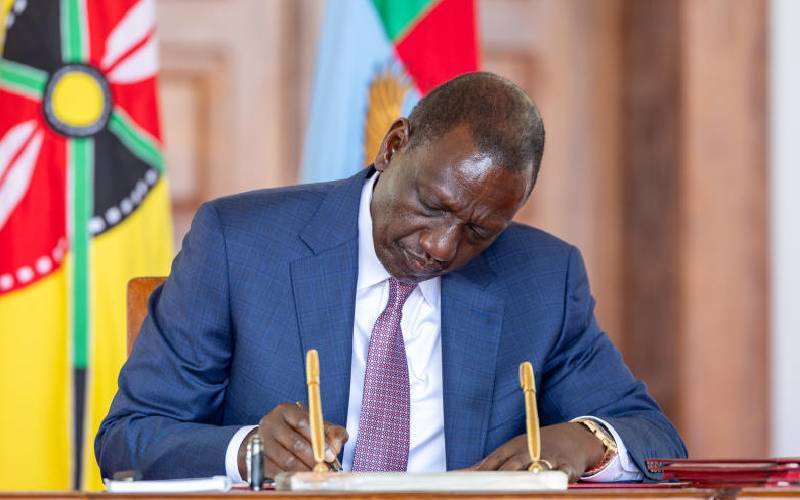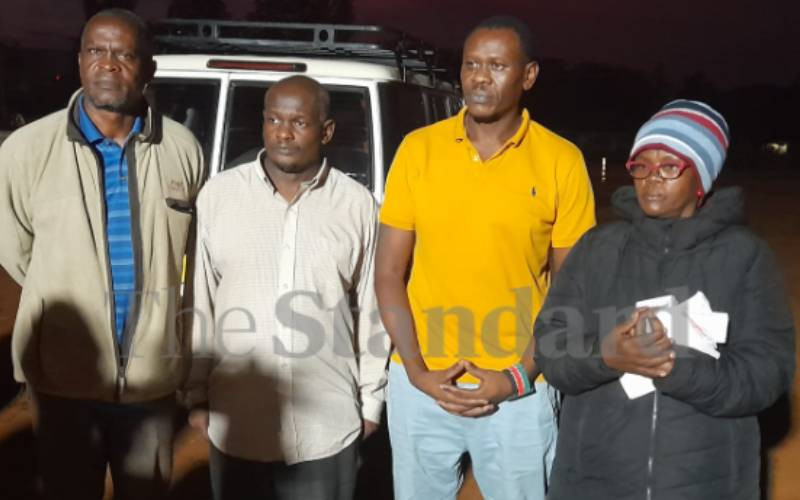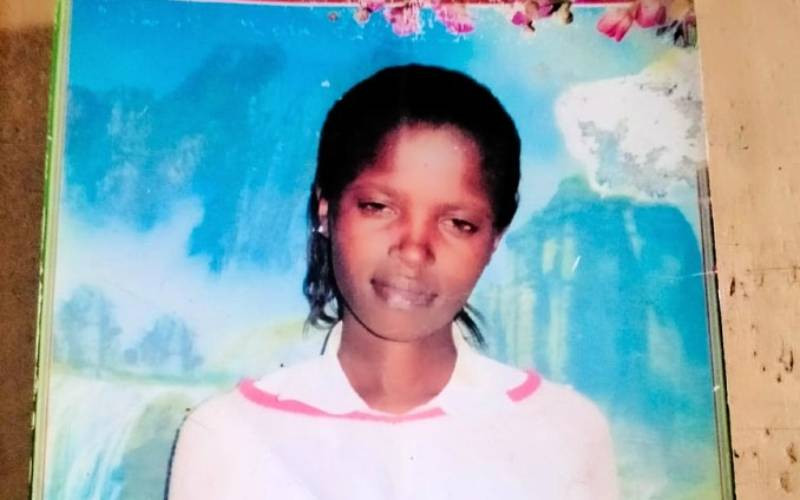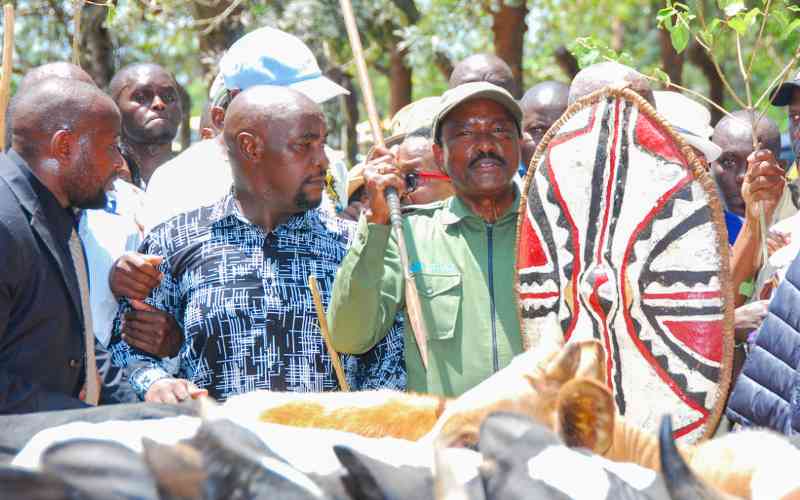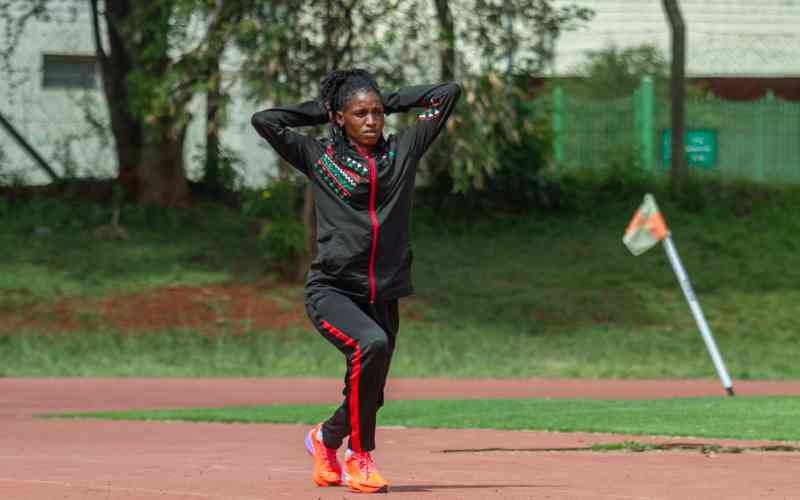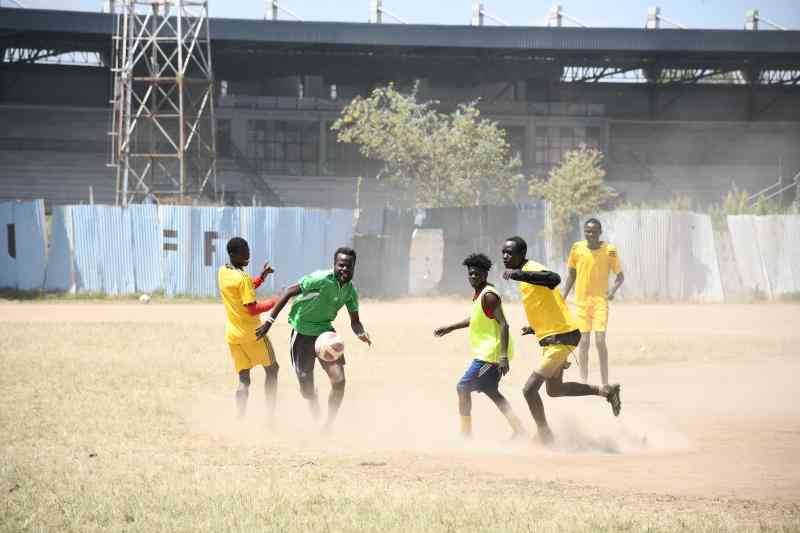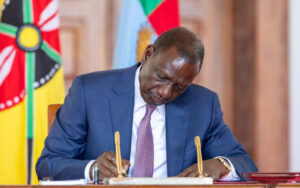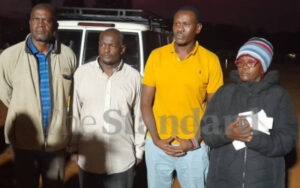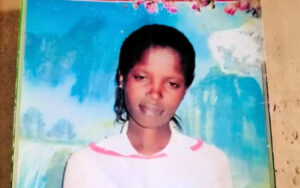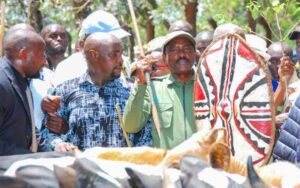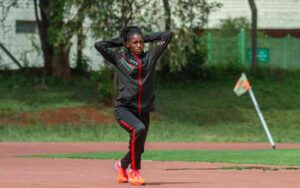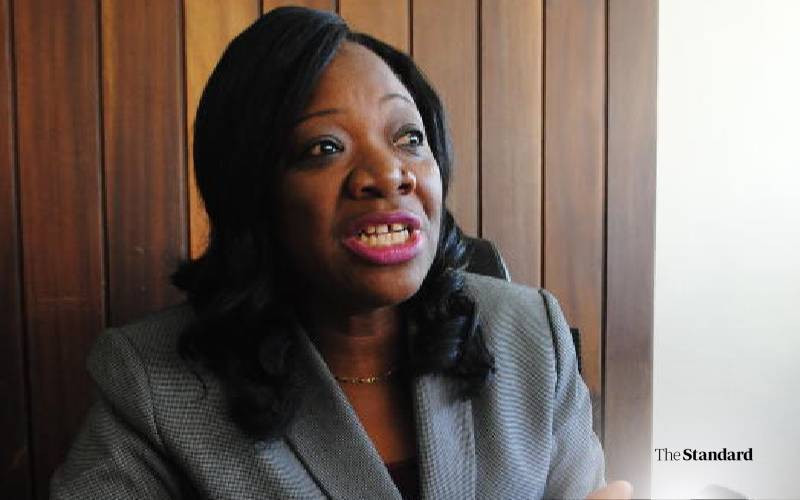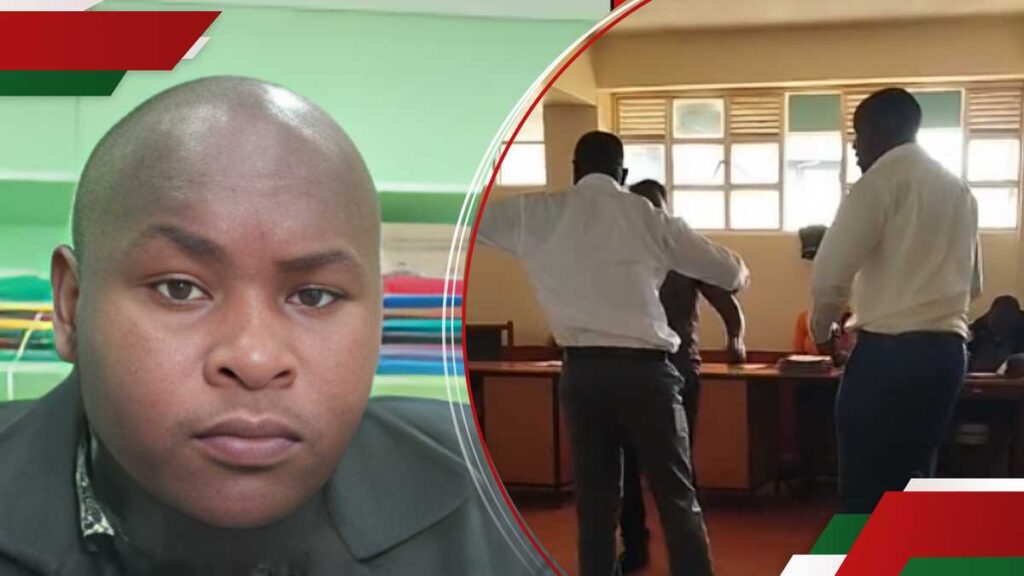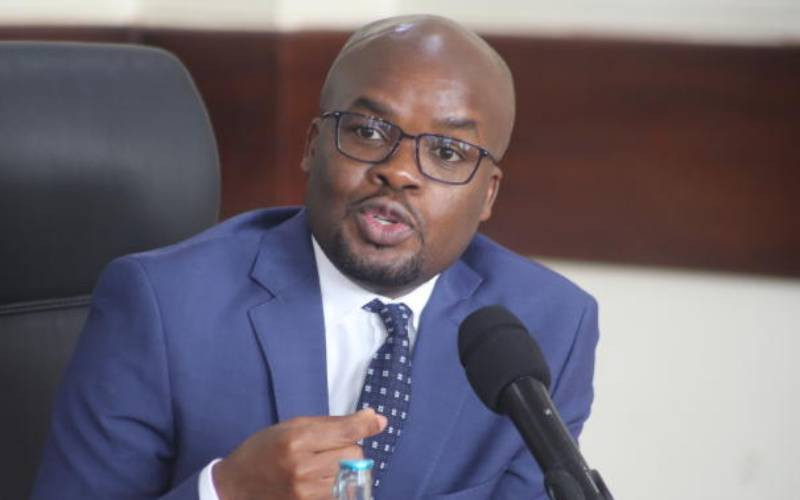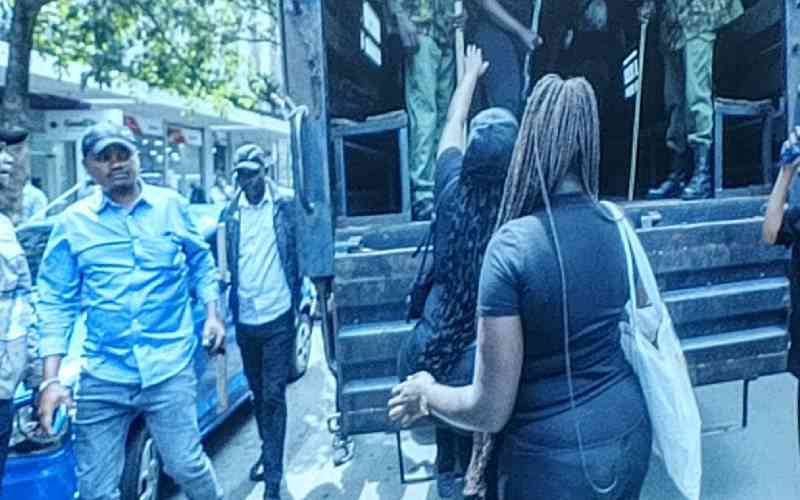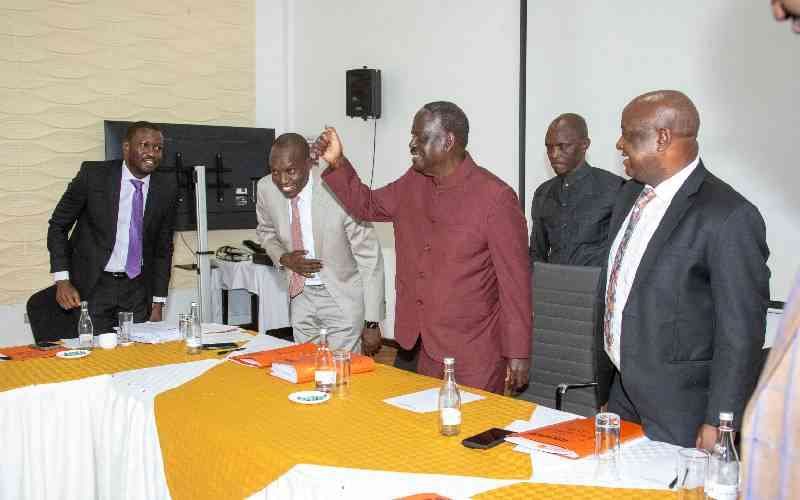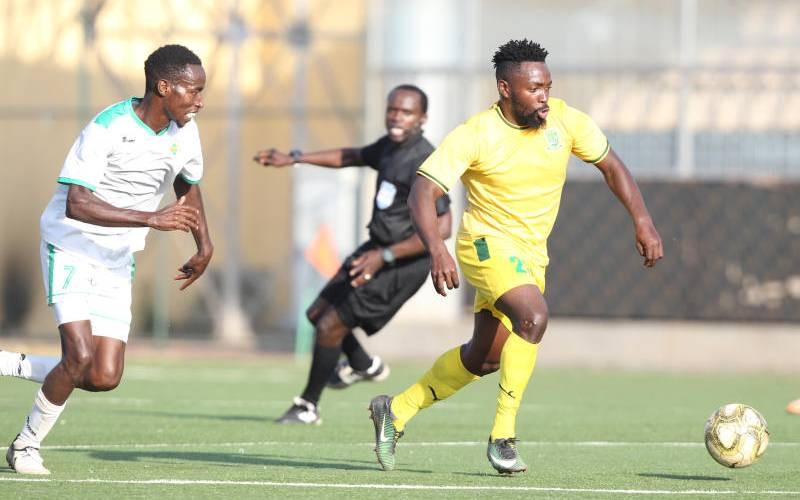A Saturday morning derby between Nakuru City Stars, clad in their striking green kits, and Nakuru City Academy, gleaming in bright yellow, promised an exciting start to the weekend at the Afraha C playground.
The match began with high energy, players weaving through the uneven patches of grass, their every move kicking up plumes of dust.
But as the game heated up, a sudden whirlwind tore through the field, sending clouds of dust spiraling into the air. The players paused, shielding their faces as the swirling grit halted play.
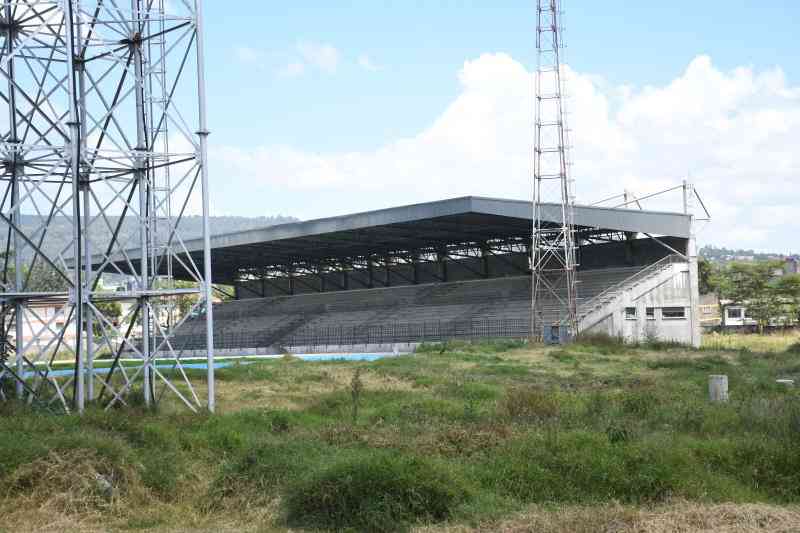
A section of Afraha Stadium in Nakuru City, still under upgrade at a cost of Sh683 million since April 2021, on January 12, 2024. [Kipsang Joseph, Standard]
“We face many challenges here in Nakuru, especially when it comes to getting a space to play. Today, we are playing a derby, yet we’re forced to play on this field, which is not even up to standard. It’s just a training ground. Fans are sitting on bare ground because there’s nowhere to sit,” lamented Francis Mbiu, a Nakuru resident and footballer.
On one side, players warm up, their determination evident despite the less than-ideal conditions. Fans are scattered around the small playing area.
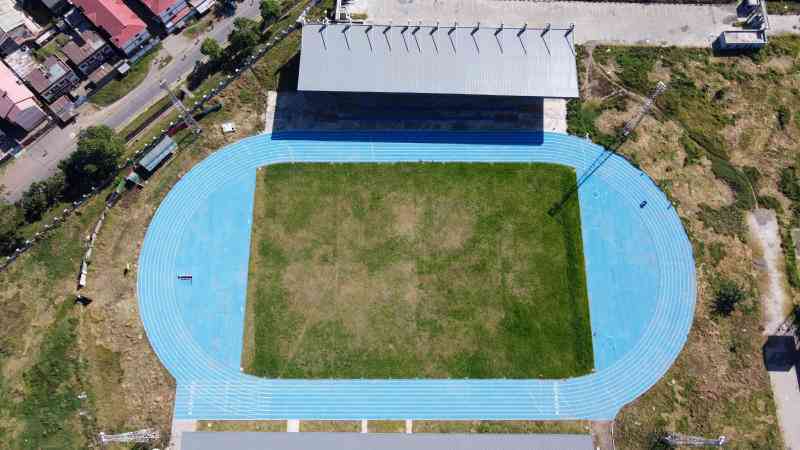
A section of Afraha Stadium in Nakuru City, still under upgrade at a cost of Sh683 million since April 2021, on January 12, 2024. [Kipsang Joseph, Standard]
Adjacent to the playground, behind a locked gate and perimeter wall, stands the unfinished Afraha Stadium, once promised as a beacon of hope for Nakuru’s sports enthusiasts, but now a symbol of broken promises and stalled progress.
Since the stadium closed for renovations on April 30, 2021, the Afraha C playground has reluctantly become the temporary hub for local footballers.
Originally expected to be completed within 14 months by June 2022, the renovation has faced constant delays, leaving the city’s football community in a state of uncertainty with no clear end in sight.
“This Afraha C is the only available space for over 50 teams within this city, but its state is also wanting. The goalposts lean at odd angles and their placements seem more guesswork than precision. The pitch itself is bare, dusty with small patches of grass,” added Mbiu.
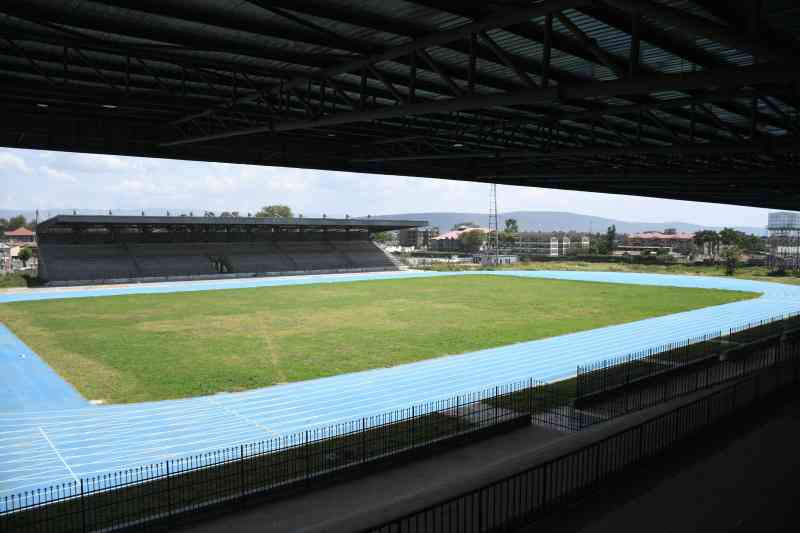
A section of Afraha Stadium in Nakuru City, still under upgrade at a cost of Sh683 million since April 2021, on January 12, 2024. [Kipsang Joseph, Standard]
The cramped dimensions of the field struggle to accommodate the constant demand, forcing teams to wait along the dusty side-lines as players and coaches endure the long wait with no alternative grounds to play on.
This situation has ignited an uproar among football stakeholders in Nakuru, who are frustrated by the stalled Sh683 million stadium upgrade funded by the World Bank through the County Government of Nakuru.
The project, which has already exceeded its initial budget by Sh32 million, was meant to elevate the city’s sports facilities, but has instead left its vibrant football culture stranded in a cloud of dust and disappointment.
“Look at this field, we are playing a derby on what’s essentially a training ground, and there’s our stadium, just over there, gathering stalled. By now its should be complete but there is no end in sight,” said Mbiu.
“Phase one is now almost complete. The only remaining task is installing the seats, which is a just buy and install Unfortunately, this was delayed due to funding challenges. However, with the supplementary budget now approved, we plan to advertise the tender for the seats within the next two weeks. We sincerely thank Nakuru residents for their patience,” said Nakuru City Manager Gitau Thabanja highlighting that a significant milestone has been made in the project .
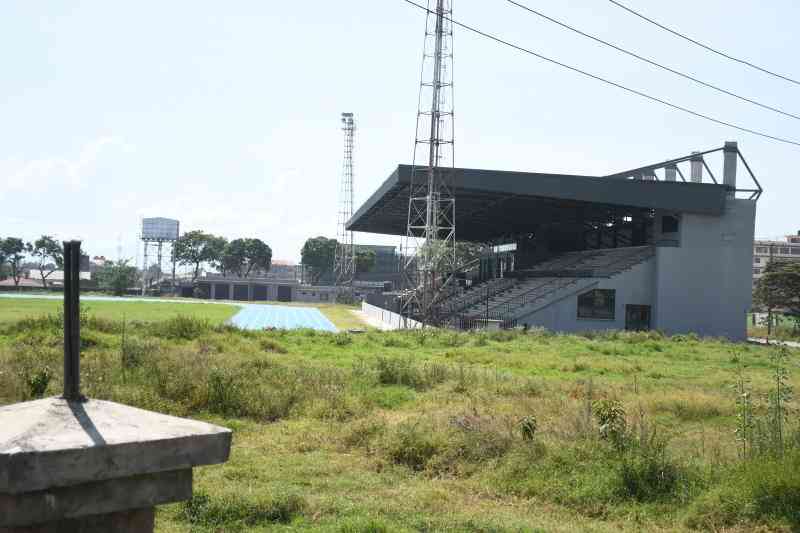
A section of Afraha Stadium in Nakuru City, still under upgrade at a cost of Sh683 million since April 2021, on January 12, 2024. [Kipsang Joseph, Standard]
The prolonged closure of the stadium has left Nakuru’s football community grappling with immense challenges, particularly for teams like Nakuru City Queens. As the only women’s Premier League team in the county, they have borne the brunt of the disruption.
“We’ve struggled a lot since the stadium was closed. We had to move from the Nakuru ASK Showground because we couldn’t afford the payments. Eventually, we relocated to a school in Gilgil, but financial constraints forced us to hand over the team to a school that offers scholarships to players,” said Bernard Esitoko, founder and CEO of Nakuru City Queens.
The lack of proper fields, he added, has not only affected women’s football, but also led to the decline of men’s teams
Mbiu’s and Esitoko frustrations are shared by many within Nakuru’s football circles. Coaches, players, and fans alike have grown weary of the delays.
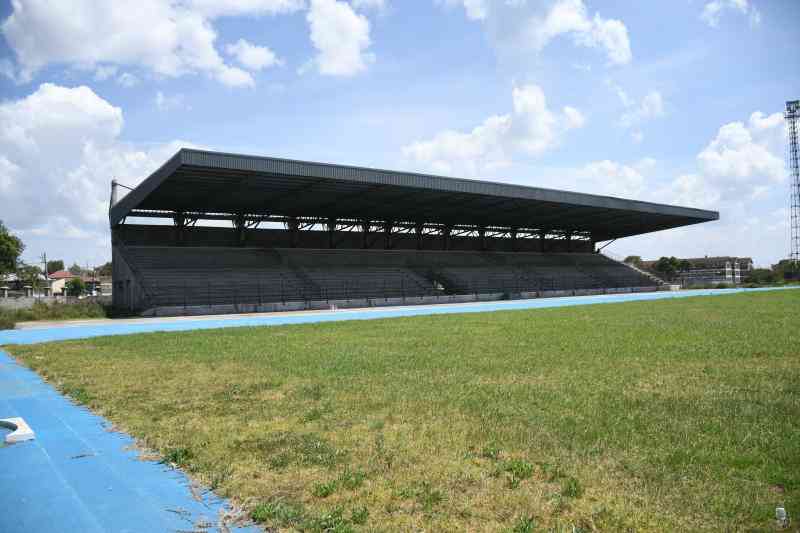
A section of Afraha Stadium in Nakuru City, still under upgrade at a cost of Sh683 million since April 2021, on January 12, 2024. [Kipsang Joseph, Standard]
Among them is Hassan Hussein, a veteran coach who has witnessed the rise and fall of Nakuru’s football scene.
“Our football has hit rock bottom. We have Division One teams with nowhere to train or play. Before, Nakuru used to be a football hub. We had teams playing in the Kenyan Premier league and FKF National Super League. Nakuru should be in top-tier football. We’re losing talent daily because the youth have no proper facilities to hone their skills.”
“With the Kenya Secondary Schools Sports Association (KSSSA) games and even the East African games set to be held in Nakuru this year, the football community is questioning whether these prestigious events will be played on school fields again.”
“But due to politics and laziness, they were moved to the showground and school fields. With the upcoming East Africa and National School Games in the horizon, the question remains: will Afraha lose these opportunities again? We are demanding that this stadium be made operational as soon as possible,” said Hussein
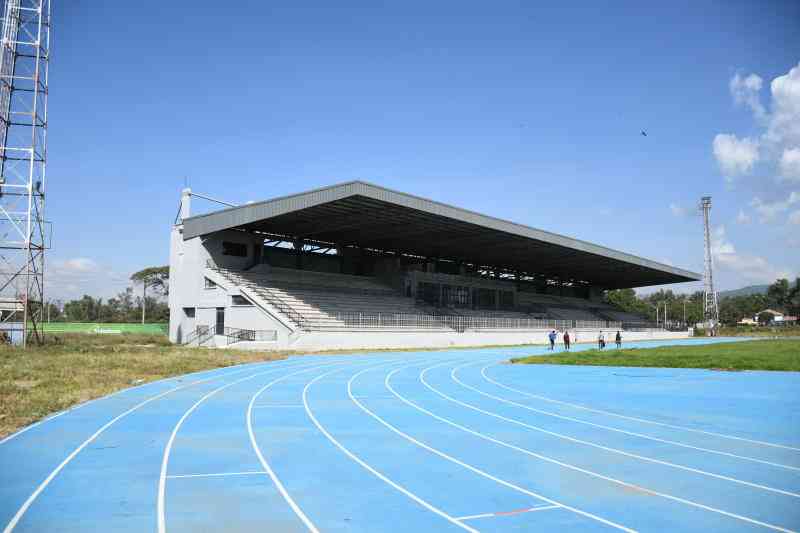
A section of Afraha Stadium in Nakuru City, still under upgrade at a cost of Sh683 million since April 2021, on January 12, 2024. [Kipsang Joseph, Standard]
He points to the overgrown bushes surrounding Afraha Stadium.
“They say the stadium is 99 percent complete. If that’s true, what’s stopping us from using it? Bukhungu Stadium in Kakamega hosted matches when it was barely 50 percent complete. Why can’t we do the same? Let the boys play on that field. We’ll give feedback on its condition,” said Hussein
George Oketch, a bodaboda rider, recalls how the stadium once brought life and income to the town. “Whenever matches or events were held, we would have customers all day. Hawkers, fruit sellers, and small businesses thrived. Now, everything has stalled. We need this stadium to reopen for the sport and for our livelihoods,” said Oketch.
From the outside, Afraha Stadium presents an abandoned, incomplete structure, shrouded in overgrown grass and bushes, with only private guards walking around the facility.
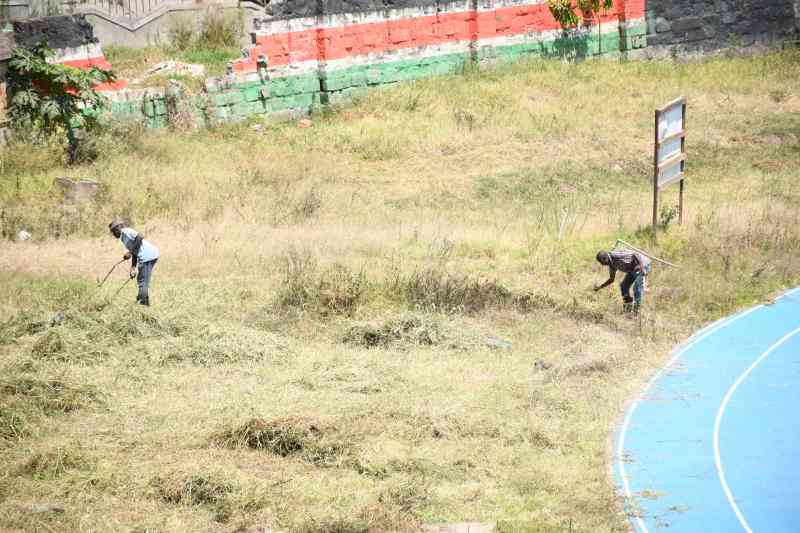
A section of Afraha Stadium in Nakuru City, still under upgrade at a cost of Sh683 million since April 2021, on January 12, 2024. [Kipsang Joseph, Standard]
Yet, inside, the transformation is striking. The lush green pitch is inviting, two impressive pavilions rise on either side, nearly complete, with only the installation of seats remaining.
A vibrant blue tartan track designed for athletics encircles the field. The lighting and water tanks are also in place. A walk through the changing rooms reveals a spacious, modern design, equipped washrooms, players holding area, a space for Gym.
Additionally, a media centre and a designated VIP section are part of the ongoing transformation.


